A guide to using paleo flour substitutes to bake and cook with for every need and taste. These options are all gluten-free and grain-free.
One quick search for paleo recipes will likely yield some sweet results. Cookies, cakes, and pancakes are no longer exclusive to the Standard American Diet.
Fortunately, there are now many paleo flour alternatives so, let’s embrace them!
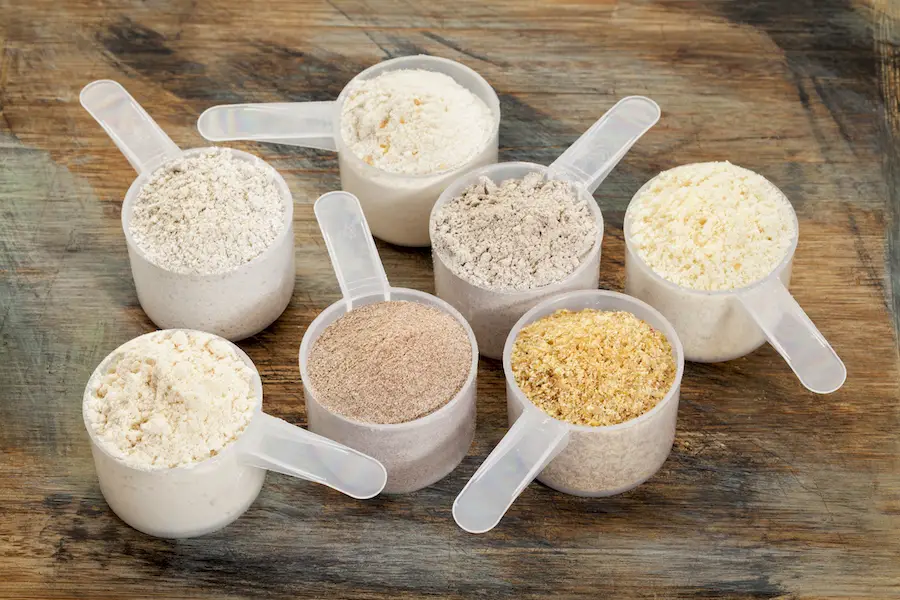
Hot loaves of sandwich bread, crispy pizza crust, and Naan bread, anyone? The Pandora’s box of paleo has been opened, and paleo flour alternatives is a growing market.
From nuts and seeds to tubers and coconut (of course), you can make and bake just about anything without the grain flours. There are an endless stream of options to sift through (get it?), so we’ve put together a little guide on what these products are made of and just how to use ’em.
Cassava flour
Cassava root is a starchy tuber root veggie, and it’s commonly used as a major source of energy in the tropics where it grows in abundance. Sometimes – especially in the States and Europe – it’s called yuca or yucca, but these are two different roots!
There are varieties both bitter and sweet, but the bitter variety contains substantially more toxins. This is why preparation is key. With flour, the removal of these toxins has been done for you though.
When cooked, cassava has a digestion rate around 75%, so it’s rather easy on the gut.
This flour substitute is nothing short of magic, and it’s the closest grain-free substitute to wheat flour that you can get. While it lacks some in the nutrition department containing just trace amounts of minerals and vitamins like phosphorous, calcium and vitamin C, it makes up for that with spot-on texture and easy usage.
Cookies, cakes, and breads will take on the most authentic texture and taste with cassava flour. Who knows – you may be able to fool your brunch guests with delicious stacks of cassava flour pancakes.
It has a very neutral taste and high starch content, so it nearly mimics the flavor of wheat flour in recipes.
You can use a 1:1 replacement in most recipes. If it calls for a cup of wheat, you can use a cup of cassava; no math or guesswork required!
This flour is both nut and grain-free, so it’s both paleo and AIP-friendly. Don’t be fooled – it is by no means a low-carb substitute for flour; it contains nearly 40 grams of carbohydrates per 100 gram serving!
The best brands of cassava products:
- Otto’s cassava flour
- Anthony’s premium cassava flour
- Siete coconut and cassava tortillas
Tigernut flour
Are you taking probiotics? For probiotics to work to their full potential, you need prebiotics. Tigernut flour is great fuel for that good bacteria to thrive, so use that as your excuse to whip up a loaf of paleo bread with this flour substitute.
Despite its name, tigernut flour is nut-free, so it’s a fantastic substitute for those following the autoimmune protocol, or with nut allergies. Tigernuts are actually a root indigenous to Northern Africa and the Mediterranean.
It’s nutritional value is rather superior to most paleo flour substitutes because it has much more in common with nuts than roots, despite its origin.
Nuts are notoriously higher in vitamins and minerals, and the tigernut contains some phosphorous, potassium, vitamin E, and vitamin C. It’s been touted as a health food in the real food world lately for good reason.
This root has a slightly sweet and slightly nutty flavour. You can generally use a 1:1 ratio when adapting recipes with this flour. You can also make tigernut flour at home!
If you have whole tigernut snacks, you can grind them down to a fine mixture in the food processor or Vitamix. You can even make tigernut milk! Check out this tutorial for both here.
The best brands of tigernut products:
- Organic raw tigernuts
- Organic Gemini tigernut flour
Coconut flour
Here we have another nut-free option with our beloved coconut. I mean, what can’t you make out of coconut? This food is a paleo staple whether it’s a snack, an oil, or a flour.
Coconut flour is perhaps the most popular grain-free flour substitute, and it’s becoming more and more common as it gains traction. Considering its versatility, we can see why.
Coconut also has an inherently low-carb nutritional profile which makes it more accessible to those following a ketogenic diet. It’s got a great macronutrient profile with a balance of healthy fats from coconut, fibre to keep digestion up and running, plus a little boost of protein.
Unlike our previous contenders, coconut flour works a bit differently in recipes. It’s best used in combination with another flour substitute as it’s highly absorbent.
For a cup of regular flour, you’ll only need to use 1/4-1/3 of coconut flour. Since it’s so absorbent, you’ll generally need a lot more liquid and/or eggs. While baking, this usually means more eggs.
The texture of the final product will likely be drier than other paleo flour substitutes, so it’s hard to reliably replace in a recipe that calls for it.
Finally, this is easily one of the healthiest paleo flour substitutes; coconut offers its “super food” powers in flour form like its milk and meat, which are high in healthy fats, protein, and fibre – a truly dynamic trio!
Check out this paleo jalapeno corn bread which coconut flour lends its grainy texture to just perfectly!
The best brands of coconut flour products:
- Bob’s Red Mill organic & gluten-free coconut flour
- Nutiva organic coconut flour
- Siete cassava & coconut flour tortillas
Arrowroot or tapioca starch
Arrowroot or tapioca starch is a suitable alternative to corn starch as a wheat-free thickening agent, but it can also be used in conjunction with other flours to give your sweets, treats, breads, and cakes a little extra fluff.
Tapioca is actually derived from cassava root, but it can’t be used in quite the same way so it’s not a suitable alternative. Generally speaking, tapioca and arrowroot can be used in place of one another as they act in similar ways.
In any case, it’s a fantastic pantry staple, and it’s one we highly recommend during the 30-day Happy Body Formula program.
On its own, a little bit of arrowroot has the ability to transform the texture to gravies, stews, and pie fillings. As a thickener, you can use about a teaspoon per tablespoon of wheat flour in recipe adaptations.
While using this starch in a baked recipe, you can expect a soft and chewy turnout which is best reserved for loaves of bread. Fortunately, it’s seldom used as a main flour substitute or ingredient in food because it’s relatively devoid of nutrition.
You probably won’t notice its addition to your food in terms of taste, as it’s pretty much neutral. You might be more familiar with tapioca in pearl form, like tapioca pudding.
This is a great option for a paleo-friendly dessert combined with natural sweetener!
Best brands of tapioca & arrowroot flour:
- Bob’s Red Mill arrowroot starch/flour
- Bob’s Red Mill tapioca starch
Almond meal
The product concept is simple – it’s just finely ground almonds. You can also use other nuts to serve the same purpose, and it works very well as a paleo-friendly flour substitute.
It’s affordable, and it can be made at home in a flash if you have a food processor handy – just make sure you don’t blend too hard, or you’re going to get almond butter instead of flour.
The major downfall? Nuts pack a serious calorie punch! At the same time, properly prepared almonds are a fantastic food for you.
They contain a nice little boost of protein, plenty of healthy fats, a bit of fibre and some important vitamins and minerals. Almonds are rich in iron, magnesium, and calcium.
Oh, and if you’re wondering what it tastes like, it taste like almonds! Its nutty taste lends itself well to sweets.
Recipes using nut flours are best reserved for special occasions and indulgences, but generally speaking, you’ll get fantastic results!
You can often sub almond flour 1:1 for wheat flour, so it’s an easy, foolproof alternative. With that said, you can also sub almond flour for another 1:1 substitute like cassava pretty invariably.
Best brands of almond flour products:
- Bob’s Red Mill super fine almond flour
- Gluten Free Mama’s all-purpose almond flour blend
- Siete almond flour tortillas
Green banana flour
Don’t worry – the stuff doesn’t even taste like bananas, so you can use this in recipes both sweet and savory. Green bananas aren’t so tasty when you eat them as a fruity afternoon snack, but they do have a uniquely healthy nutrient profile!
They are a fantastic source of resistant starch.
To make it more palatable, you could start using this flour to cook with. You can also add a scoop to your morning smoothie if you like, making it a more versatile powder beyond its baking abilities.
It has a mellow, earthy flavor that is generally well received. It’s loaded with prebiotic fibre which acts as fuel for the good bacteria in our gut, and we still get that boost of potassium that we get in bananas. You can use it in any recipe with flour – simply use about 40% less banana flour.
Best brands of banana flour products:
- Wedo natural banana flour
- Zuvii gluten-free banana flour pancake & waffle mix
Sweet potato flour
You’ve probably learnt that most healthy starches make for a great flour alternative! Sweet potato flour is no exception to the rule. It is versatile in baking and can easily be used as a thickener.
It holds moisture – quite unlike coconut flour – and it does retain some taste and color from the sweet potato making it ideal for slightly sweet recipes!
The sweet potato is packed with vitamin A and K plus more, so this is a nice way to pack in the nutrients. It’s best used alongside another flour substitute, as you can’t replace wheat flour 1:1 with it.
It’s a fabulous nut-free and allergen-free alternative for those who find it difficult to replace wheat flours with nut flours.
Best brands of sweet potato flour products:
- Zocalo Peru sweet potato flour
- Gluten-free sweet potato pancake & waffle mix
Coffee flour
Coffee flour is pretty new on the rise, and it’s not just ground-up coffee beans! Instead, coffee flour is comprised of coffee cherry pulp powder. So, what in the world is that?
It’s simply the other parts of the coffee plant – not the bean! This fruit yields something sort of like flour, but it can feel a little more like a spice. It’s got traces of iron, protein, potassium, and fibre so it’s pretty healthy in our book.
It’s not highly versatile; it can only be used to replace up to 15% of a recipe’s flour content. It has a tasty mellow flavour profile, though, so it’s worth tossing a scoop into the mix to add some layers of depth to grain-free flour recipes!
Best brands of coffee flour products:
- Trader Joe’s coffee flour
This is what you need to know about which flours are grain-free, paleo-friendly and compliant with our 30-day program or our 7-Day Make Ahead Meal Plan! What is your favorite grain-free flour to work with? Share your recipes and tips with us!
Share this post on Pinterest!
Music, mountains, dogs, travel, food and friends.

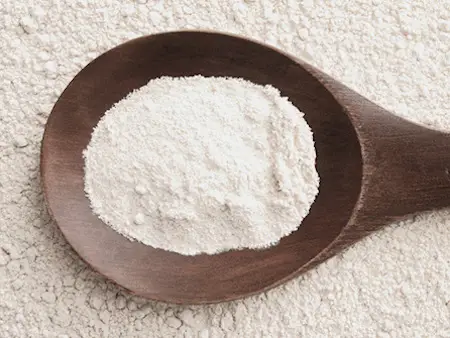
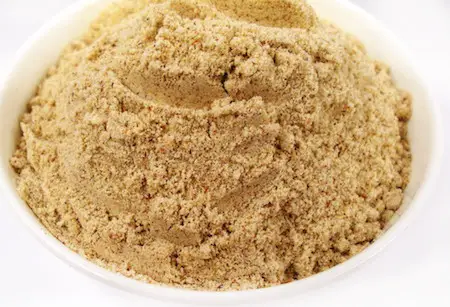
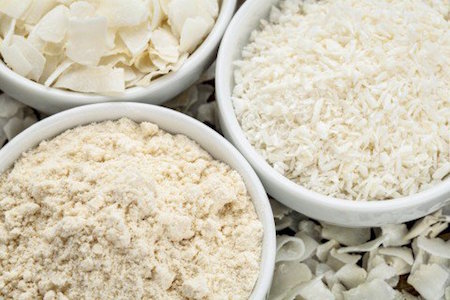
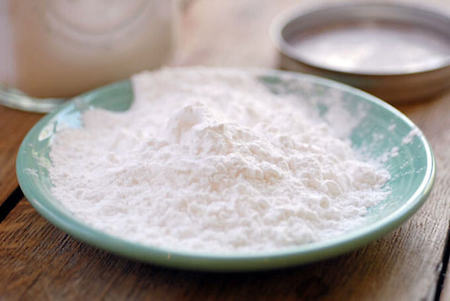

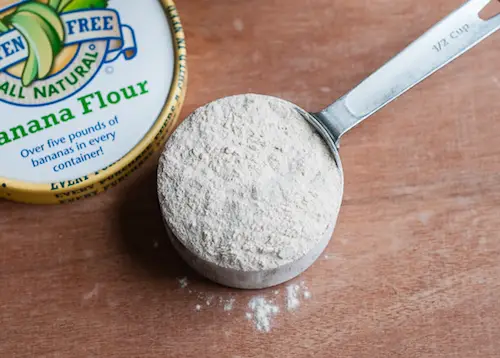
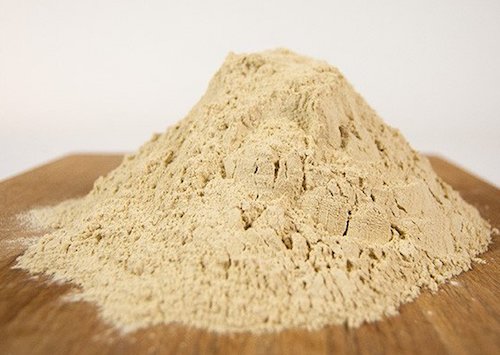
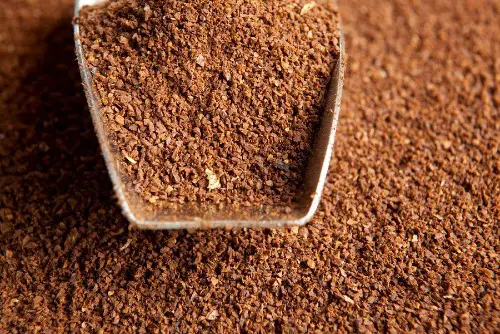
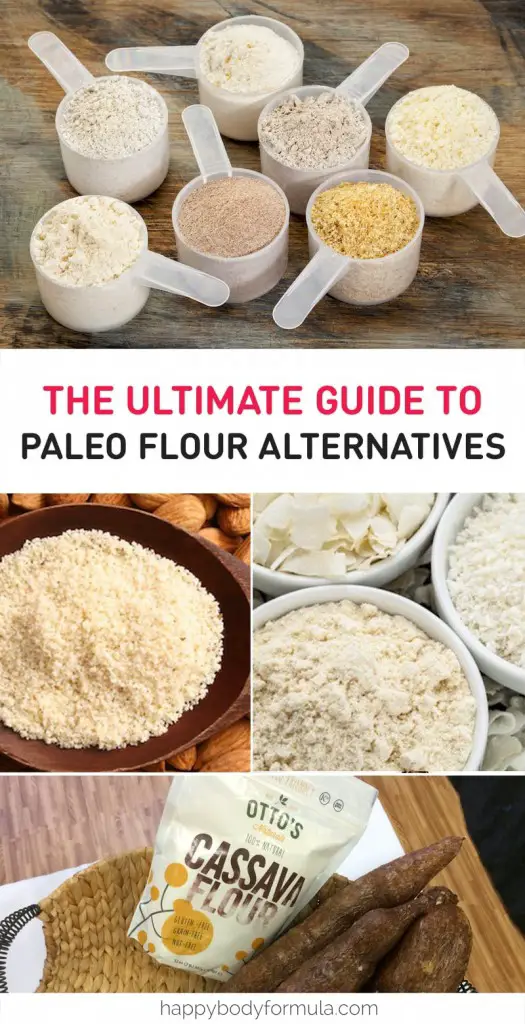

^^^ What is this person talking about I am so lost lol >_< . Anyways thanks for your insight, I didnt realize coconut flower could be replaced for actual flower. I imagine the fat content of it is much higher, but if you're tracking macros properly this shouldn't be a problem. Excellent suggestions. Also thanks for teaching me something new!
Yes, the fat is a bit higher and so is the protein and fibre! It’s a nutritious source of healthy fats. I’m glad you found some good knowledge here.
What about Sweet Potato Flour or Banana Flour? Thanks for the list!
Definitely! I’ll have to update this one 🙂
If I don’t have Casals flour. What is the substitute ratio for almond flour or arrow rot whic I already have?
Almond flour is best used in conjunction with another flour like coconut flour, but the amounts will vary according to recipes as their is no 1:1 guide for almond/coconut to wheat flour.
What is the ratio when replacing rice flour with banana flour? Looking to make my gluten free recipes more paleo.
Cullen: You can sub coconut flour for other flours, but they are NOT AN EQUAL exchange! The coconut flour absorbs WAY MORE liquid than regular flour does, AND it does NOT rise in the same way as regular flour. So, be careful to use recipes that have the correct proportions listed for youm plus the correcr rising agents.